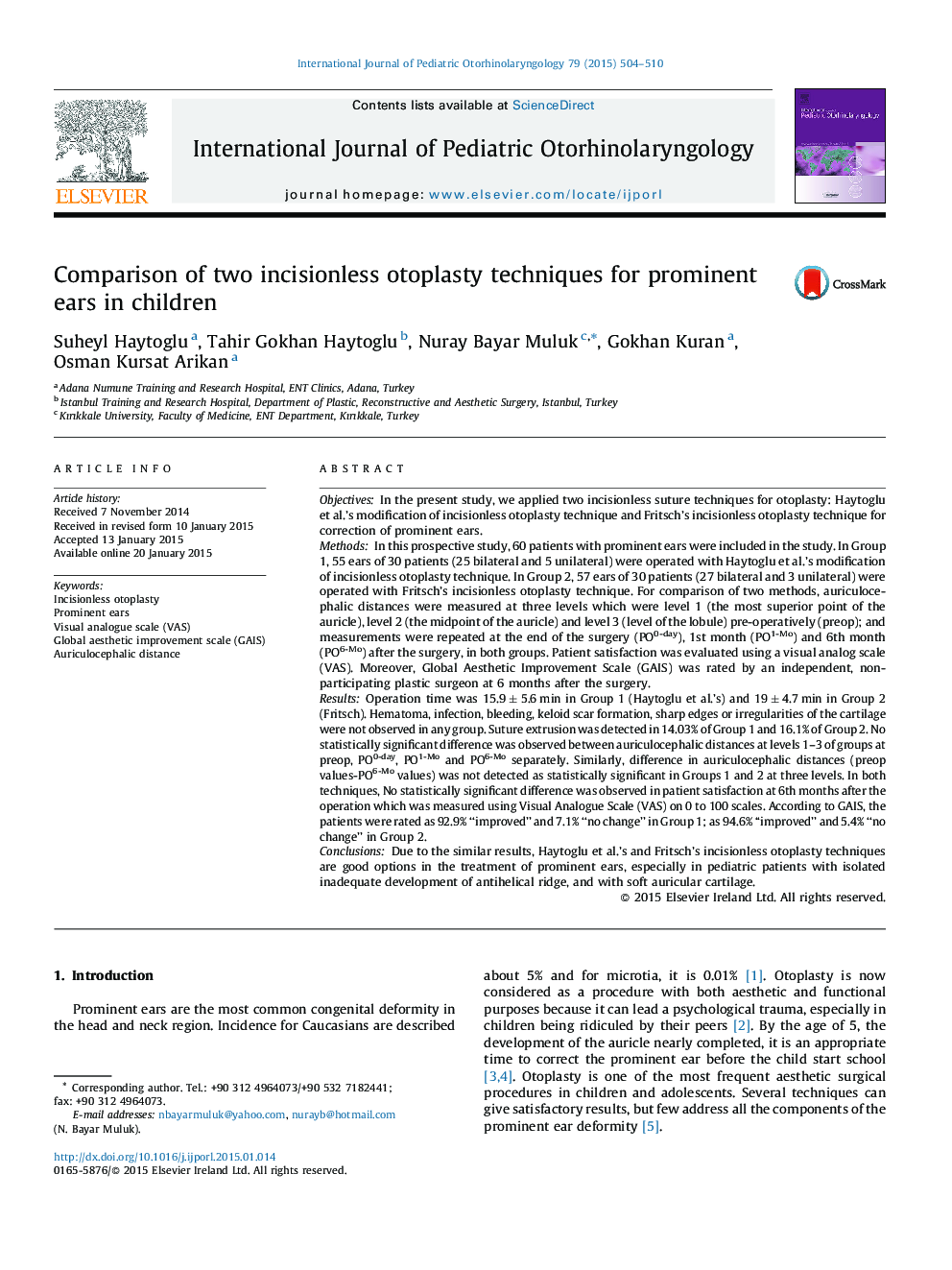| Article ID | Journal | Published Year | Pages | File Type |
|---|---|---|---|---|
| 4111700 | International Journal of Pediatric Otorhinolaryngology | 2015 | 7 Pages |
ObjectivesIn the present study, we applied two incisionless suture techniques for otoplasty: Haytoglu et al.’s modification of incisionless otoplasty technique and Fritsch's incisionless otoplasty technique for correction of prominent ears.MethodsIn this prospective study, 60 patients with prominent ears were included in the study. In Group 1, 55 ears of 30 patients (25 bilateral and 5 unilateral) were operated with Haytoglu et al.’s modification of incisionless otoplasty technique. In Group 2, 57 ears of 30 patients (27 bilateral and 3 unilateral) were operated with Fritsch's incisionless otoplasty technique. For comparison of two methods, auriculocephalic distances were measured at three levels which were level 1 (the most superior point of the auricle), level 2 (the midpoint of the auricle) and level 3 (level of the lobule) pre-operatively (preop); and measurements were repeated at the end of the surgery (PO0-day), 1st month (PO1-Mo) and 6th month (PO6-Mo) after the surgery, in both groups. Patient satisfaction was evaluated using a visual analog scale (VAS). Moreover, Global Aesthetic Improvement Scale (GAIS) was rated by an independent, non-participating plastic surgeon at 6 months after the surgery.ResultsOperation time was 15.9 ± 5.6 min in Group 1 (Haytoglu et al.’s) and 19 ± 4.7 min in Group 2 (Fritsch). Hematoma, infection, bleeding, keloid scar formation, sharp edges or irregularities of the cartilage were not observed in any group. Suture extrusion was detected in 14.03% of Group 1 and 16.1% of Group 2. No statistically significant difference was observed between auriculocephalic distances at levels 1–3 of groups at preop, PO0-day, PO1-Mo and PO6-Mo separately. Similarly, difference in auriculocephalic distances (preop values-PO6-Mo values) was not detected as statistically significant in Groups 1 and 2 at three levels. In both techniques, No statistically significant difference was observed in patient satisfaction at 6th months after the operation which was measured using Visual Analogue Scale (VAS) on 0 to 100 scales. According to GAIS, the patients were rated as 92.9% “improved” and 7.1% “no change” in Group 1; as 94.6% “improved” and 5.4% “no change” in Group 2.ConclusionsDue to the similar results, Haytoglu et al.’s and Fritsch's incisionless otoplasty techniques are good options in the treatment of prominent ears, especially in pediatric patients with isolated inadequate development of antihelical ridge, and with soft auricular cartilage.
